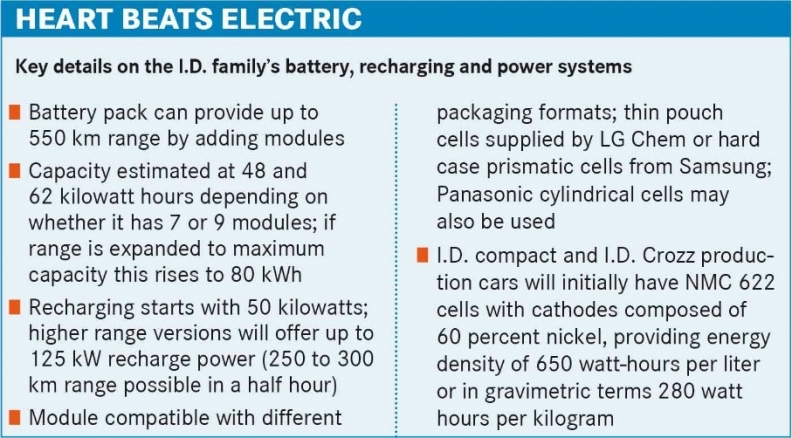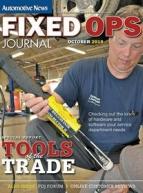Volkswagen says the MEB platform that will underpin its I.D. electric-vehicle family will be even more scalable than the MQB architecture used for 80 percent of the group’s combustion engine cars.
Because of that flexibility, MEB, which is a German abbreviation for Modular Electric Toolkit, could give VW a decisive edge over industry competitors when it comes to economies of scale. “This is a platform to generate volume by using the same parts in a wide variety of models,” Tino Fuhrmann, project leader and head of the MEB model line, said during a presentation at VW’s factory in Dresden, Germany. “We have less variance than MQB, which is something we needed.”
Those benefits were possible because Fuhrmann and his team tapped into the expertise VW has gained from years of using MQB, which is short for modular transverse matrix. The architecture is utilized in millions of VW Group combustion engine cars ranging in size from the VW Polo small hatchback to the Skoda Superb sedan. “All that we know from MQB, we put into MEB to get the best scale possible,” Fuhrmann said.
By the end of 2022, the VW, Audi, Skoda and Seat brands will have launched 27 MEB-based models. VW Group expects to build about 10 million MEB vehicles over the life cycle of the first-generation architecture.
One concrete example Fuhrmann gave to show the commonality benefits gained from the architecture was VW’s decision to have just two standard drivelines for all MEB-based vehicles depending on whether they offer rear- or all-wheel drive, with one universal type of power electronics. “This was the idea. Scale, scale, scale,” Fuhrmann said.
VW’s efforts were so successful, the company was able to equip the I.D. family with only one type of permanent synchronous motor for all vehicles. Normally, PSMs are lighter and more compact but require expensive rare earth metals such as neodymium, for their magnetic properties.



